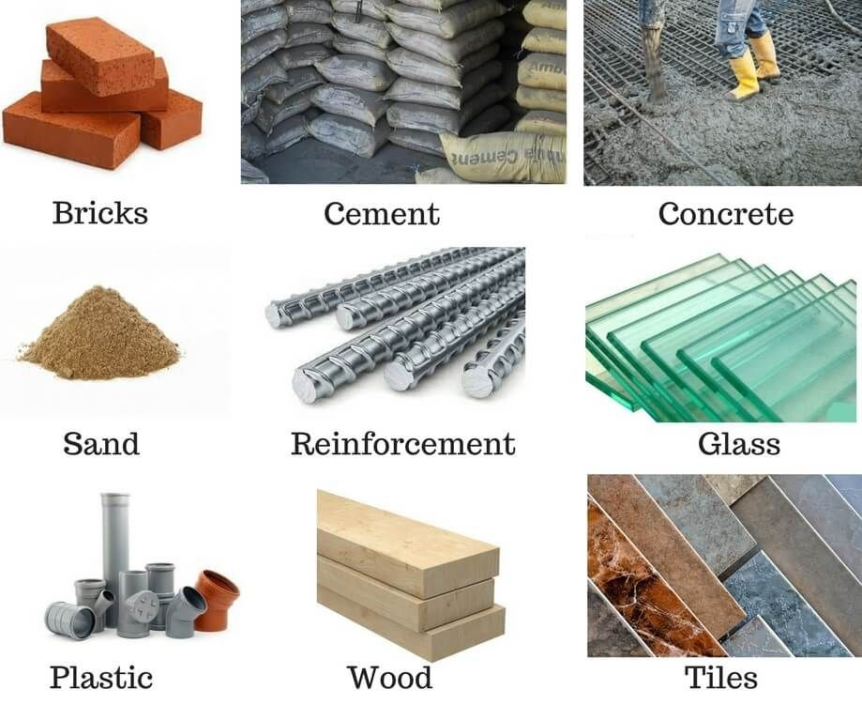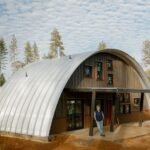Building Materials: Stone, Brick, Wood, Steel, and Glass
- By -Peter
- Posted on
- Posted in Modern Architecture
Building materials are fundamental to architectural design, influencing aesthetics, functionality, and sustainability. Each material offers unique properties that architects leverage to achieve specific design goals. This article explores the characteristics, applications, and advantages of five essential building materials: stone, brick, wood, steel, and glass.

Stone
Characteristics and Applications
Stone is one of the oldest building materials, valued for its durability, strength, and natural beauty. It can be quarried in various types such as granite, marble, limestone, and sandstone, each with distinct colors and textures. Stones are commonly used for exterior cladding, facades, and decorative elements due to their resilience against weathering and fire.
Advantages
- Durability: Stone structures can withstand harsh weather conditions and maintain their appearance over centuries.
- Aesthetic Appeal: Natural variations in color and texture create visually striking facades and interiors.
- Low Maintenance: Requires minimal upkeep compared to other materials, contributing to long-term cost savings.
Examples in Architecture: Taj Mahal in India, Colosseum in Rome.
Brick
Characteristics and Applications
Brick is a versatile material made from fired clay, known for its strength, thermal insulation properties, and ease of manufacturing. Available in various colors and sizes, bricks are used in load-bearing walls, facades, and pavements. Modern bricks may incorporate additives for enhanced durability and energy efficiency.
Advantages
- Thermal Insulation: Provides natural insulation, reducing heating and cooling costs.
- Fire Resistance: Offers high fire resistance, enhancing building safety.
- Versatility: Can be laid in different patterns, adding aesthetic variety to structures.
Examples in Architecture: Red House by William Morris, Farnsworth House by Mies van der Rohe.
Wood
Characteristics and Applications
Wood is prized for its warmth, versatility, and sustainability as a renewable resource. It can be used structurally in timber frames, cladding, flooring, and interior finishes. Different species of wood offer varying degrees of hardness, color, and grain patterns, influencing aesthetic choices in architecture.
Advantages
- Sustainability: Renewable and energy-efficient material when sourced responsibly.
- Aesthetic Appeal: Natural beauty and warmth create inviting interiors and exteriors.
- Ease of Construction: Lightweight and flexible, facilitating innovative architectural designs.
Examples in Architecture: Villa Savoye by Le Corbusier, Tamedia Office Building in Switzerland.
Steel
Characteristics and Applications
Steel is a robust and versatile building material valued for its strength-to-weight ratio and structural integrity. It is commonly used in structural frameworks, columns, and roofing systems. Steel can be fabricated off-site, allowing for faster construction and greater precision.
Advantages
- Strength: High tensile strength and durability, suitable for tall and complex structures.
- Versatility: Allows for long spans and open floor plans, accommodating diverse architectural designs.
- Recyclability: Highly recyclable material, reducing environmental impact.
Examples in Architecture: Empire State Building in New York, Lloyd’s Building in London.
Glass
Characteristics and Applications
Glass is a transparent, versatile material used extensively in modern architecture for windows, facades, and interior partitions. It enhances natural light penetration and visual connectivity while contributing to energy efficiency through advanced glazing technologies.
Advantages
- Daylighting: Maximizes natural light, reducing reliance on artificial lighting.
- Visual Transparency: Creates open, spacious environments and connects indoor spaces with outdoor views.
- Energy Efficiency: Low-emissivity coatings and insulated glass improve thermal performance.
Examples in Architecture: Louvre Pyramid in Paris, Apple Park Visitor Center in Cupertino.
Conclusion
Building materials play a crucial role in defining architectural aesthetics, functionality, and sustainability. Stone, brick, wood, steel, and glass each offer unique advantages that architects leverage to create diverse and innovative structures. By understanding the characteristics and applications of these materials, architects can design buildings that harmonize with their environments while meeting the practical needs of inhabitants.



